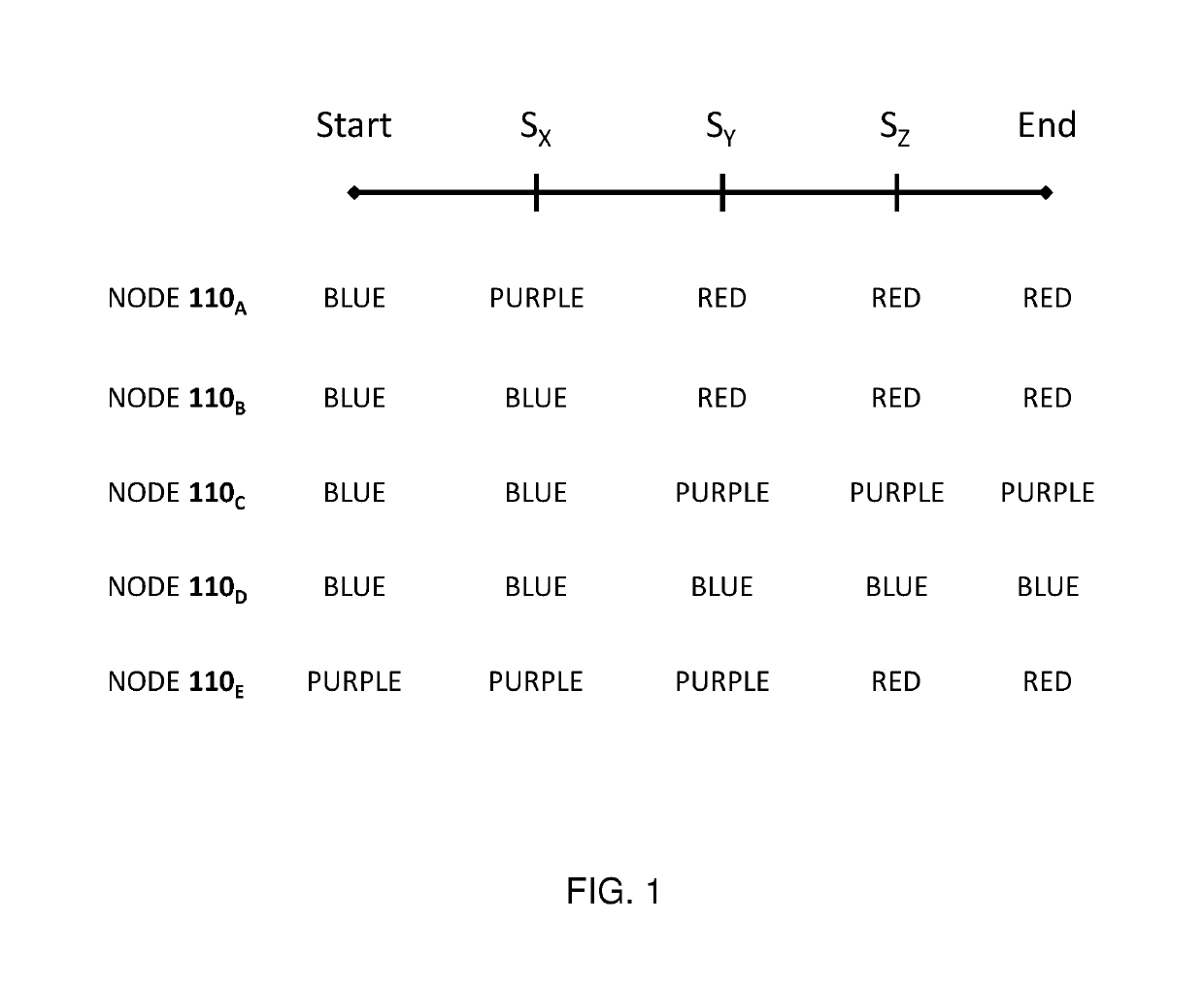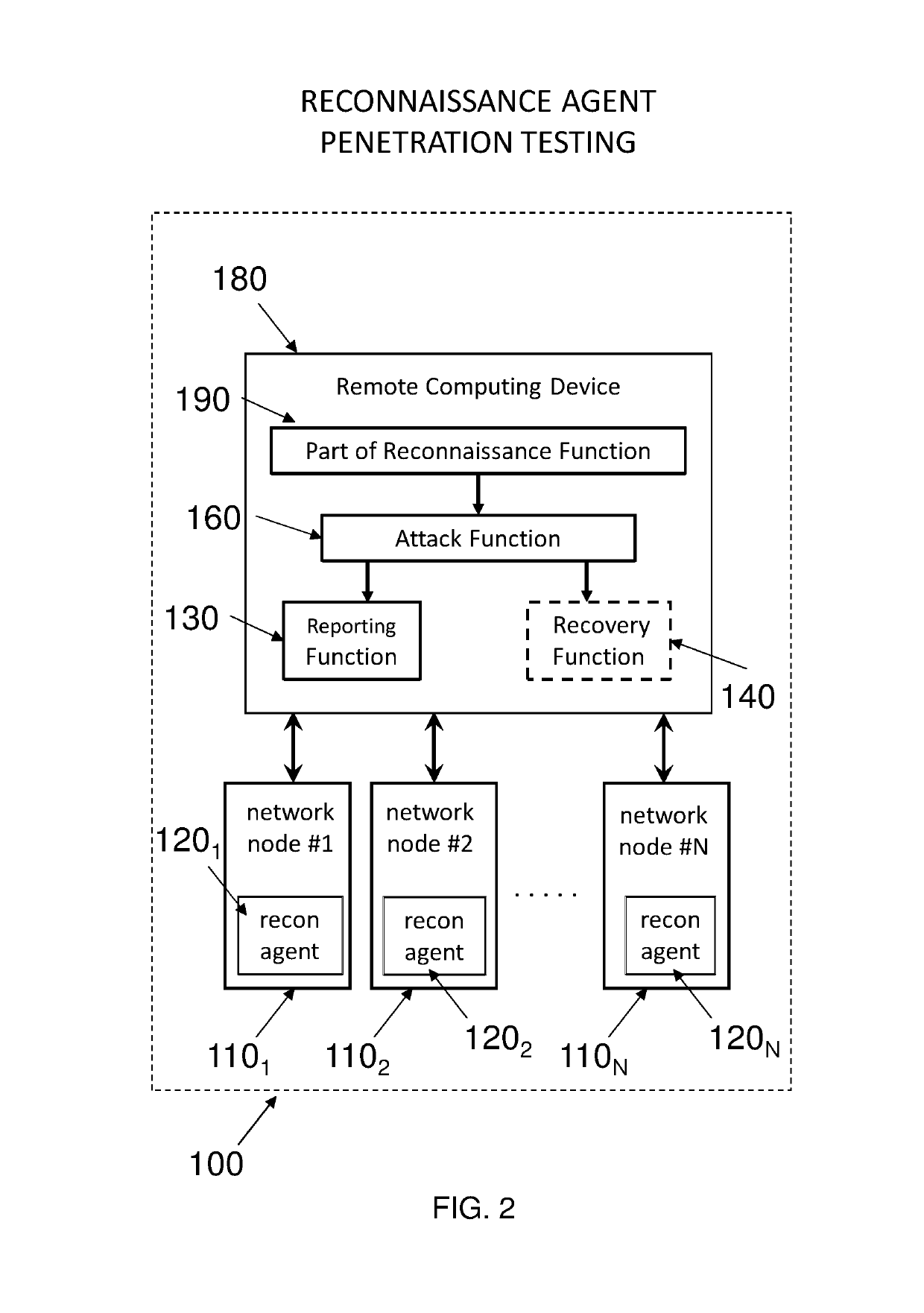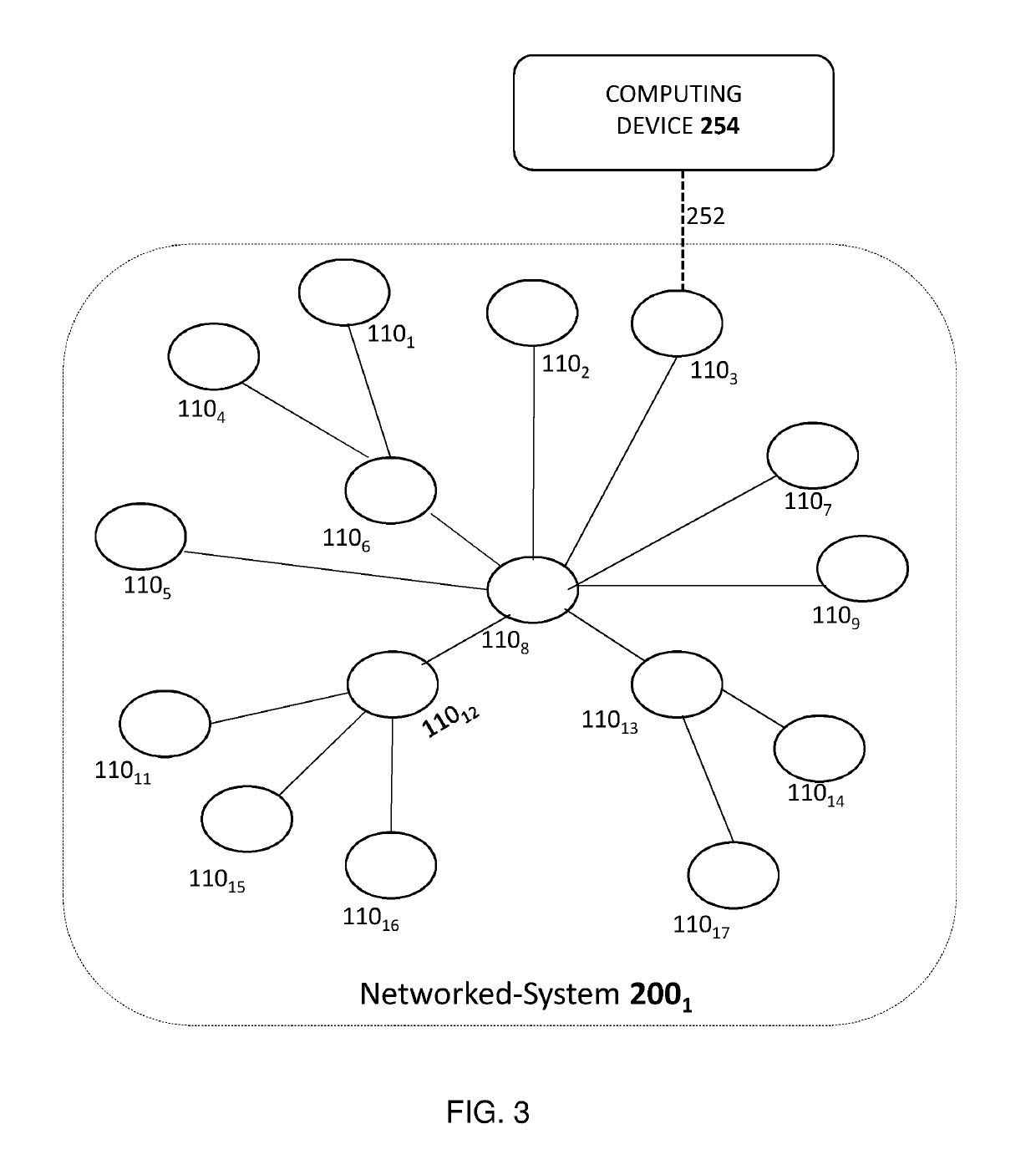Taking privilege escalation into account in penetration testing campaigns
a privilege escalation and penetration testing technology, applied in the field of system and method for penetration testing of networked systems, can solve problems such as significant damage, total shutting down of all operations, loss of such data, and leaking such data to outside unauthorized entities, and achieve the effects of avoiding the loss of such data
- Summary
- Abstract
- Description
- Claims
- Application Information
AI Technical Summary
Benefits of technology
Problems solved by technology
Method used
Image
Examples
example 1
[0071]During a penetration testing campaign carried out according to embodiments of the present invention, a specific iteration may include the following:
[0072]A. Based on the current collection of red and purple nodes, selecting the next target node to be checked for compromisability. The selection of the target node is done from the current group of blue nodes and according to the lateral movement strategy employed by the campaign.
[0073]B. Based on the selected target network node, selecting a potential vulnerability that may compromise the selected target network node. The vulnerability is selected from the vulnerabilities known to be potentially effective in compromising a network node with one or more characteristics known to be present in the selected target network node.
[0074]C. Attempting to validate that the selected target network node could be successfully compromised using the selected potential vulnerability. The attempt is typically based on data about the current cond...
example 2
[0082]During a penetration testing campaign carried out according to embodiments of the present invention, a specific iteration may include the following:
[0083]A. Based on the current collection of red and purple nodes, selecting the next target node to be checked for compromisability. The selection of the target node is done from the union of the current group of purple nodes and the current group of blue nodes. In the current example we assume the selected target node happens to be a purple node.
[0084]B. Based on the selected target network node, selecting a potential vulnerability that may compromise the selected target network node. The vulnerability is selected from the vulnerabilities known to be potentially effective in compromising a network node with one or more characteristics known to be present in the selected target network node. Note that the newly selected vulnerability for compromising a selected target node which is already a purple node is different from a previous...
PUM
 Login to View More
Login to View More Abstract
Description
Claims
Application Information
 Login to View More
Login to View More - R&D
- Intellectual Property
- Life Sciences
- Materials
- Tech Scout
- Unparalleled Data Quality
- Higher Quality Content
- 60% Fewer Hallucinations
Browse by: Latest US Patents, China's latest patents, Technical Efficacy Thesaurus, Application Domain, Technology Topic, Popular Technical Reports.
© 2025 PatSnap. All rights reserved.Legal|Privacy policy|Modern Slavery Act Transparency Statement|Sitemap|About US| Contact US: help@patsnap.com



